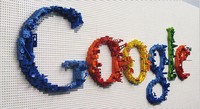Google's Fast Flip for Digital Media
Google's release of a beta service of Fast Flip fits the profile for what could become the company's bid to republish and redistribute most of the world's online news content, in a manner which claims to benefit the publisher.

At a book festival last April, Google CEO Eric Schmidt let loose another interesting fact about its business plans: he told that his company was working on a new and advanced news search algorithm, that would automatically serve users the topics and news providers they're interested in, based on its assessment of what the reader has pulled up in the past -- "to determine what the reader is looking for without knowing they're looking for it," Waxman wrote.
Google would then sell ads to go alongside the results its algorithm would retrieve. While those ads would not directly benefit the publisher, Schmidt told Waxman, the traffic the service would generate would indirectly benefit it by increasing its impressions.
It was also reported, Google has teamed up with 36 publishers for the initial rollout. Users who visit the Fast Flip site are greeted with large thumbnail images of various articles sorted by their source, topic, or current popularity. That initial page seems at least a little like Bing Visual Search, but the similarities end there.
Once you click on an article Fast Flip lets you flip through the pages as if you were flipping through a traditional print magazine or newspaper. Google feels that recreating the print media experience online will attract more readers and help its partner publishers transition more smoothly to delivering information over the Internet.
Fast Flip is not an experiment in altruism though. Google plans to make money and share that revenue with the publishers it partners with. Fast Flip pages are not bogged down with multimedia content and multiple ad banners. They are streamlined to load quickly (hence the "fast" part of Fast Flip).
In the meantime, It doesn't necessarily make browsing for news faster. The flipping interface shows one story at a time in legible form-versus the dozens that plain ol' Google News puts on one screen-along with thumbnails in which the headlines are tiny and the articles themselves are too tiny to read. Once you click on a preview, you go to the originating site-which is no faster than usual-and getting back to Fast Flip may be kinda cumbersome, especially if you've clicked through to a multi-page article.
The previews break some conventions of the Web. They may have what seem to be hyperlinks, and tools like icons for printing the page, but none of this stuff works-the preview is a giant hyperlink to the article on the originating site.
Subscribe to Pravda.Ru Telegram channel, Facebook, RSS!





